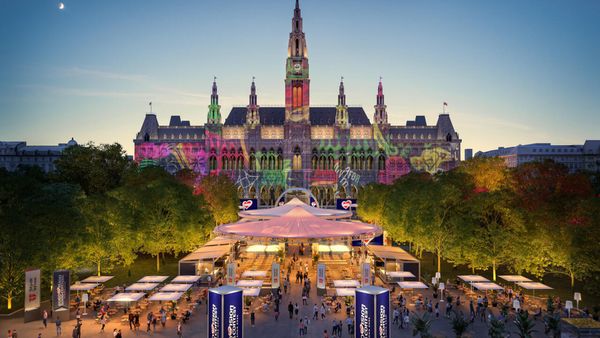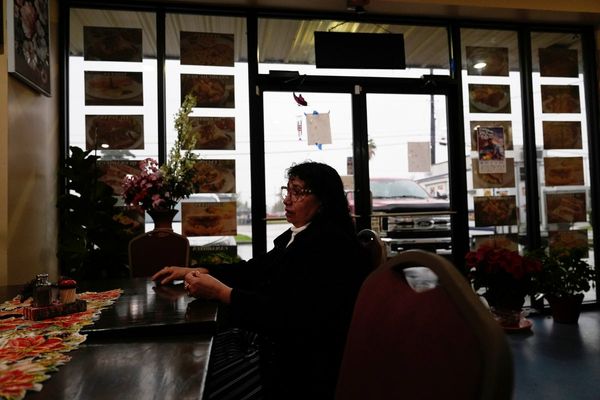
Owen Wilson strolls up a street synonymous with rugby league in Brisbane during the festival of footy known as Magic Round.
“Owen! Owen!” yells a bloke from a Caxton Street pub. “Come for a beer!”
Without breaking stride, the actor raises a fist above his shaggy blond locks, the hint of an impish smile breaking out beneath one of the world film’s most recognisable noses.
“Oi, I’ll … I’ll shout ya a beer!” the bloke’s mate throws into the bargain.
Then, once all the yahooing peters out into awed silence, another voice is heard.
“Wow.”
This is one of many Wilson encounters captured on mobile phones in south-east Queensland in recent weeks as the Hollywood A-lister bestrides Brisbane and the Gold Coast to shoot Runner. The action film is the latest in a string of big-budget US productions lured to Australia’s sunshine state by tax rebates and incentives, custom-built facilities, experienced crews and a weak Aussie dollar combined with a backdrop of golden beaches and subtropical greenery.
The spark that ignited Queensland’s film boom though was the sanctuary – or “bubbles” – Australia offered international productions during the Covid-19 pandemic.
Nationally, the industry experienced a post-pandemic surge in spending on films, from a little over $1bn in 2019-20 to just shy of $2.4bn at its peak in 2022-23. But in Queensland, the surge was meteoric. In 2019-20, $57m was spent making films in the state – the next year that figure was $557m and by 2022-23 it was $700m. Since the pandemic, Queensland has hosted franchises from Thor to Kong and stars from Tom Hanks to Mark Wahlberg.
But with the big spend easing and productions in something of a lull, experts are warning of twin threats facing the industry: a US president who views the red carpet rolled out to Hollywood on the Gold Coast as “a National Security threat” and a workforce on the brink of burnout.
Peter Hegedus, a film-maker and academic says the pandemic not only precipitated a film boom – but laid bare a “mental health crisis” within the industry.
During the darkest days of the pandemic, the Griffith University associate professor and his colleagues set up a screen collective where practitioners could meet virtually and discuss the things that mattered to them during that period of isolation.
“What came out of that was the fact that there is a mental health crisis happening, that people are getting burnt out, the long hours, there’s bullying,” Hegedus says.
“And we thought, ‘hang on, well, we need to look at this, we need to see if we can get some data.’”
The result was a survey of more than 860 workers from all sectors of the industry and a preliminary report that its authors say exposes an industry reliant on “workers’ passion to offset poor conditions”.
While 76% of participants felt proud of the work they do, 72% did not think the Australian screen industry was a mentally healthy place to work.
The report put stark figures on the number of workers who felt as if they were regularly tasked with unreasonable deadlines, pressured not to claim basic entitlements like sick leave and left time for little to no life outside work.
But, Hegedus says, two figures from the report reveal just how close the industry could be to “breaking point”: 36% of respondents reported they frequently had considered leaving their jobs in the past six months and 25% said they would probably quit within the next six months.
And that was before president Trump took to his Truth Social platform to declare his intent that “MOVIES MADE IN AMERICA, AGAIN!” via a “100% tariff on any and all Movies coming into our Country that are produced in Foreign Lands”.
“So I think if the tariffs came in and American productions were taken out of the equation, I would think we would see a mass exodus of Australian film members leaving,” Hegedus says.
One among those at the crossroads is Lilli Corrias-Smith.
Finishing her film studies in Brisbane and entering the industry around the boom of 2020, Corrias-Smith went on to land full-time and casual work in the camera and technical departments on a range of productions shot in south-east Queensland, including local shows from Netflix’s Boy Swallows Universe and Stan’s Black Snow to US series La Brea and movies Mortal Kombat 2 and Anaconda, a horror comedy starring Jack Black and Paul Rudd.
“I am one of the many young people that benefited from that boom because our career growth was accelerated 10 times faster than it would normally,” she says. “Because there was just so much American work, and Australian work, but especially the American jobs that were of that larger scale that had more roles available – and higher paying roles as well.
“Especially for young women entering the camera department, we’ve had a huge, huge boom since 2020.”
Yet, at 24, Corrias-Smith is taking a break from full-time work to travel and reflect on the next career.
Corrias-Smith has always harboured “greater creative ambitions” and while the big US productions have brought well-paid and consistent gigs for camera crews, technical and service workers, they have not provided the same opportunities for writers, producers, directors and lead actors.
And while she has worked on sets brimming with “great camaraderie” that left her feeling privileged to do the kind of work she does, Corrias-Smith says there were others on which she felt “devalued” and endangered by long drives home after gruelling days.
So Corrias-Smith is weighing up her options. Should she commit to technical or camera work, take the leap into writing more of her own stories – or do something completely different?
One film-maker who opted for a career change is 50-something former film-maker Mick Angus. After three decades of writing, directing and producing documentary films and series, Angus put down the camera about two years ago and is now a partner in a finance company, living in the Gold Coast hinterland.
While Angus says the model of attracting foreign money has been a boon for the industry’s service sector, he believes opportunities have dwindled for those at its creative engine.
“It’s a very different industry now from when I started,” he said
“There’s probably only two types of people that can survive in the current environment, that’s if you’re really young and you’re hungry, or if you’re entrenched and experienced”.
In between those two stages, many aspiring creatives will face what Angus calls “the real test”: can they afford to tell Australian stories, raise a family and maybe even pay off a home loan?
And if the answer is “no”, he says, many other, better paid, industries will find the skills, creative problem-solving and appetite for hard work honed on film sets attractive.
“Which is not a great outcome for our cultural growth as a nation”.
But one film-maker and academic, Mark David Ryan, sees potential silver linings in the storm cloud that is Trump’s threatened tariff, at least when it comes to telling Australian stories on screen.
Ryan says the president’s idea is vague and lacking in crucial detail – how it would work and what it applies to is unclear. And the Queensland University of Technology professor warns that, if levies stopped US films and series from being shot abroad, it could “dramatically reduce employment” in the Australian film industry.
But that doesn’t make Australia powerless. Ryan says the government could, for example, “slap content quotas” on the big streaming companies that would require them to screen Australian productions – something the prime minister has committed to, without providing details.
“This is an important time for the government to think about: well what are some other ways we could support the Australian film and TV industry?” Ryan says.
“Could we put more money into local production, which is not as vulnerable to external shocks?”
• In Australia, support is available at Beyond Blue on 1300 22 4636, Lifeline on 13 11 14, and at MensLine on 1300 789 978. In the UK, the charity Mind is available on 0300 123 3393 and Childline on 0800 1111. In the US, call or text Mental Health America at 988 or chat 988lifeline.org.







